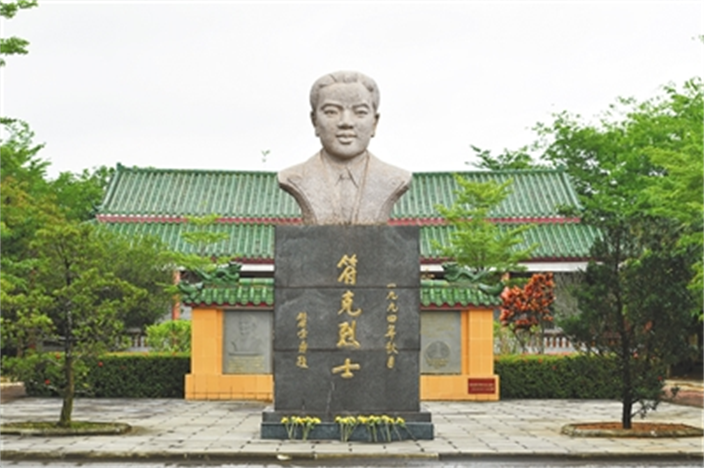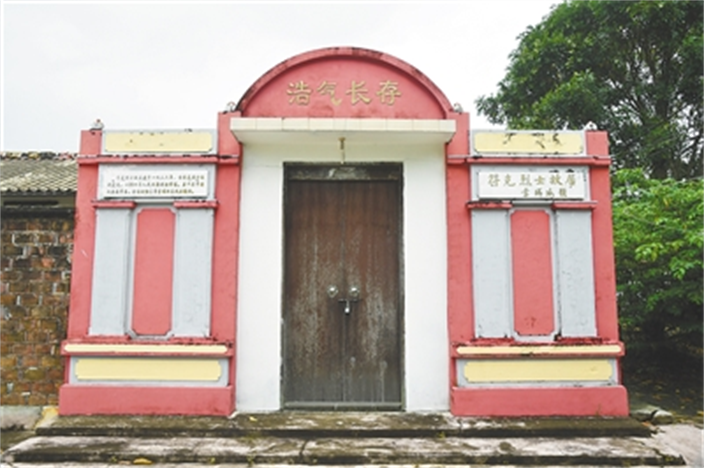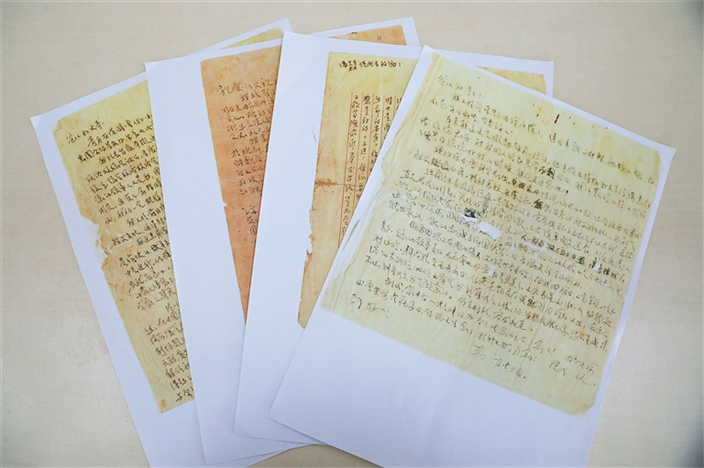By continuing to browser our site and use the services you agree to our use of cookies, Privacy Policy and Terms of Use. You can change your cookie settings through your browser.
Editor's note:
This year marks the 80th anniversary of the victory in the Chinese People's War of Resistance Against Japanese Aggression and the World Anti-Fascist War. The Qiongya campaign in Hainan formed a crucial part of this epic struggle. In the early 20th century, many Hainanese left their homeland to seek livelihoods in Southeast Asia. Through diligence and ingenuity, they not only built new lives but in many cases became local magnates. However, after the war erupted, groups of overseas Hainanese resolutely returned to their homeland to join the fight against the invaders.
"I joined the national salvation effort, prepared to sacrifice my own life, only to fulfill my duty and contribute all I have to the cause of national liberation. I believe you understand that if our country perishes, we will be enslaved."These impassioned words were written in 1940 by Fu Ke, a Hainan-born overseas Chinese, in a letter to his father and elder brother in Saigon (present-day Ho Chi Minh City in Vietnam) after he had returned to China to support the Chinese People's War of Resistance Against Japanese Aggression.

A bust of the martyr, Fu Ke, in his home village of Dongtaishan, Changsa Town, Wenchang City. (Photo: Hainan Daily)
In 1939, when the news that Japanese forces had invaded Hainan reached the Chinese community in Vietnam, it immediately aroused righteous indignation among the expatriates. Fu Ke quickly organized the "General Regiment of the Hainan (Qiongya) Overseas Chinese Returnees Service Corps," leading over 40 compatriots in Vietnam to return to their homeland. They brought with them large quantities of medicines, medical equipment, and funds raised by overseas Chinese, all of which went to support the frontline. Just one year later, in August 1940, this young patriot was murdered by an extremist Chinese Kuomintang (KMT) party faction in an act of utmost treachery.
More patriotism than one letter home could convey
Fu Ke was born in 1915 in Dongtaishan Village, Changsa Town, in eastern Hainan's Wenchang City. With barely a penny to his name, his father had to journey across the South China Sea to Southeast Asia to make a living when Fu was a kid. Upon reaching adulthood, Fu joined his father in Vietnam. In 1935, determined to further his education and serve his country, Fu returned to China to attend university in Shanghai, where he became active in national salvation movements.

Fu Ke's former residence still stands in his hometown, a humble reminder of his roots. (Photo: Hainan Daily)
By 1938, as the flames of war escalated, Fu was dispatched from Yan'an in China to Vietnam to help unite and mobilize the overseas Chinese community in joint resistance against Japanese aggression, staying at the small hotel his father managed in Saigon. Around the same time, as conflict enveloped Hainan, Fu’s wife was forced to flee the island with their four-year-old daughter, Fu Manfang, seeking refuge in Saigon. Their family reunion was all too brief, after only a few months together, Fu had to lead the service corps back to war-torn Hainan. At the docks, they had a heart-rending farewell—it would be the last time they saw each other in life.
Fu Manfang, then a little girl, still remembers the moment she last saw him: "Daddy picked me up and carried me onto the ship, telling me he was taking me to see the ocean with him. But just before the ship was to depart, he set me back on shore." Dressed in a suit, Fu Ke posed for a final photograph on the deck with his father, capturing a poignant image of two generations. He then waved goodbye to his entire family and the crowd of well-wishers and set off for his homeland.

Between the summer and autumn of 1939, Fu Ke led the service corps to support the war of resistance against Japanese aggression in Hainan. This is the photo of Fu Ke (left) with his father on the deck before leaving Saigon. (Photo: Hainan Daily)
Being so young, Fu Manfang could not understand the significance of her father’s decision to return to Hainan, nor the mortal dangers he was about to face. It was only years later, when she could read the letters he sent home that she grasped her father's profound sense of duty and patriotism—his steely resolve never to live as a slave in a conquered nation.
In one moving letter, Fu Ke reminded his family that the struggle to save the nation could not be borne by a few individuals alone, and he hoped they would understand his determination and forgive his leaving. "I have joined the revolution," he wrote, "and I hope you can broaden your vision and embrace this cause with understanding, giving me your infinite sympathy and forgiveness." These lines revealed Fu Ke's unwavering determination to return homeland and his willingness to sacrifice everything for the war of resistance against Japanese invasion. In that same correspondence, he spoke of life and death with striking equanimity: "To me, life and death are not the primary concern… it is merely a part of one’s journey. If misfortune befalls me, then my historical duty will have been fulfilled." This young man was fully prepared to lay down his life for his country.

Four letters home written by Fu Ke. (Photo: Hainan Daily)
Fu wrote four heartfelt letters to his family during this period, in which he poured out his love for both family and homeland. Over the decades, the letters, ink on now-yellowed pages, remained carefully preserved by his daughter Fu Manfang, who later became the curator of the Hainan Normal University Library. Though time had weathered these fragile sheets, the sincerity and passion in the writing had not faded. In December 2021, at 86 years of age, Fu Manfang made the noble decision to donate her father’s four letters and other personal historical materials to the Hainan Provincial Archives. By donating these treasured documents to the archives, she hoped that more people would come to learn about her father's brief yet glorious life of patriotism and sacrifice.
Fearless sacrifice in the War of Resistance
Those perilous journeys back to Hainan by these overseas compatriots were acts of true courage. After Japanese troops landed and occupied Haikou in February 1939, the enemy navy blockaded the Qiongzhou Strait, cutting off the most direct route to the island. Determined to return and join the resistance, overseas Chinese compatriots had to take great risks, often traveling via Hong Kong and then Naozhou Island off the coast of Zhanjiang, from where they made daring nighttime dashes across the strait.
Between April and September 1939, around 250 overseas Hainanese, organized into groups from places like Vietnam, Singapore, and Thailand, managed to sneak back to Hainan in five batches. Their voyages were fraught with danger. They braved rough night seas, evaded Japanese patrols, endured separation and loss of contact upon landing, and in one tragic incident, a team of seven members of the Thailand group perished at sea. Yet despite these hardships and sacrifices, they pressed on, driven by their love of country.
Together, the overseas Chinese who made it back formed an extraordinary team. They brought with them large quantities of Western medicines, medical instruments, and funds generously donated by overseas Chinese communities abroad. Upon arriving in Hainan, the members of the Overseas Chinese Returnees Service Corps handed over all the money and supplies to local resistance forces led by the KMT and the CPC. The corps members themselves took on a multitude of duties. They established field hospitals and first-aid stations to treat wounded soldiers and civilians, they organized public communications to boost morale, and they even fought side by side with the local resistance fighters, standing up to the enemy in direct confrontations.
The General Regiment of the Hainan Overseas Chinese Returnees Service Corps was established in Shude Township, Qiongshan County on June 19, 1940. Fu Ke, owing to his leadership and vision, was appointed as its commander. With this heavy responsibility on his shoulders, Fu crisscrossed the island, traveling between Wenchang, Qiongshan, Ding’an, Danzhou, Chengmai, Wanning, and other areas. He worked tirelessly to rally the people wherever he went, spreading the message of patriotism and unity. He and his team also delivered urgently needed medical care and supplies to soldiers and villagers. Even today, elderly residents in some parts of Wenchang still remember how the Service Corps set up medical clinics in different locations and how warmly welcomed and respected they were wherever they went.
One evening in the early summer of 1940, an incident occurred in Wenchang's Tanniu Township that would leave an indelible mark on those who witnessed it. A young local woman, in a desperate attempt to resist the assault of invading Japanese soldiers, was brutally stabbed over ten times with a bayonet and left for dead. Upon hearing the news, Fu immediately rushed to the scene together with a doctor to render aid.
The situation was dire, the woman had lost a tremendous amount of blood. The doctor shook his head gravely, muttering, "She's lost too much blood…" The victim's distraught family clutched at hope and pleaded, "Doctor, you’re the only one who can save her. Please, show some mercy on her." The only hope for the gravely injured woman was an immediate blood transfusion. But in the chaos of the moment, with limited equipment in the field, there was no way to determine her blood type. The doctor looked around urgently and asked the gathered villagers, "Who has O-type blood here?"
Without a second thought, Fu stepped forward. "I do!" he exclaimed. He swiftly extended his right arm and urged the doctor, "Take my blood, quickly!" Rich, crimson blood flowed from Fu's veins into the wounded woman’s body. Thanks to his selfless blood donation, her life was saved.
In August 1940, with the war in Hainan raging, Fu set out on a mission born of his earnest desire to see the second KMT-CPC cooperation in the fight against the invaders come to fruition. Carrying an official letter of introduction and gifts from the Service Corps, Fu traversed mountains and valleys alongside Wei Yiguang, a comrade who was a covert CPC member, to reach the town of Hanlinxu in Ding’an County, the stronghold of the KMT authorities in Hainan. There, they sought to meet with the local KMT leaders, Commissioner Wu Daonan and Garrison Commander Wang Yi, to report on their recent trip to Hong Kong, which was aimed at securing more aid, and to discuss plans for relief and united resistance in Hainan. Fu arrived full of hope that the meeting could foster greater unity against the Japanese aggression. However, after the meetings concluded, Wu Daonan dispatched armed troops to seize Fu and Wei. The two men were secretly taken to a grassy hill near Xiapo Village. There, under the cover of darkness, they were executed in cold blood. Fu Ke met a martyr's end at the age of only 25.
At the end of 1941, Hong Kong fell to the enemy, cutting off the crucial channel that connected Hainan's resistance with overseas support. With outside aid severed, the Service Corps could no longer operate and was forced to disband in 1942. Yet Fu's surviving comrades did not falter. They were reassigned to new roles. Many joined the Communist-led Qiongya Anti-Japanese Independent Column and they fought on, carrying forward the spirit of resistance that Fu had embodied.
ASEAN Media Visit Qionghai Tropical Auto Test Track
11:51, 27-August-2025Sanya’s West Island: From Fishing Village to Zero-Waste Model
11:10, 27-August-2025BiUH Welcomes the Class of 2025 in Hainan
11:10, 27-August-2025Hainan FTP Extends Corporate Income Tax Incentives till 2027
04:40, 24-August-2025Li Yuemei: the “Mulan” of Nanqiao Jigong
04:37, 24-August-2025Discovering Mysteries Season 5, Episode 12: Love Ballad of the Rainforest Frog
05:26, 22-August-2025By continuing to browser our site and use the services you agree to our use of cookies, Privacy Policy and Terms of Use. You can change your cookie settings through your browser.





